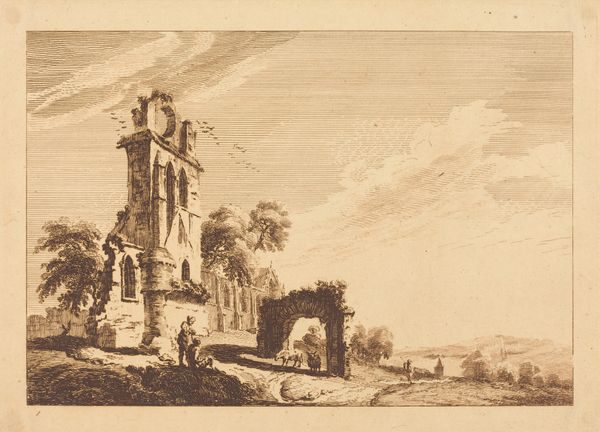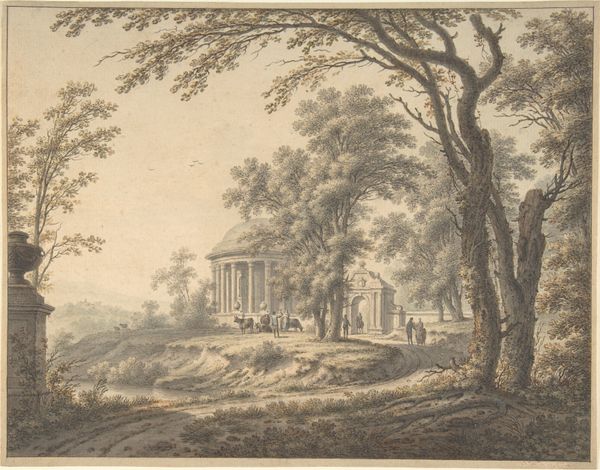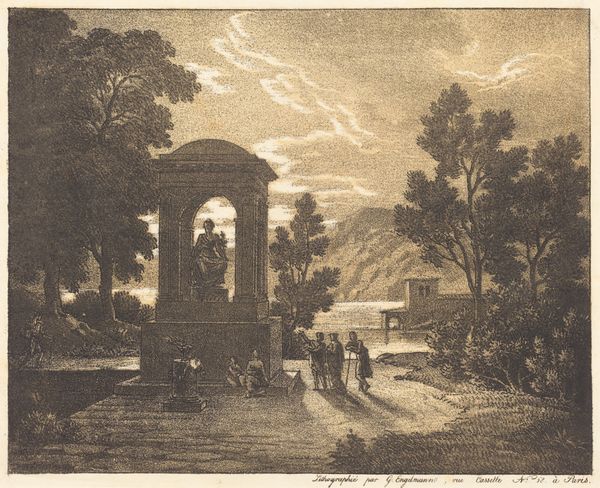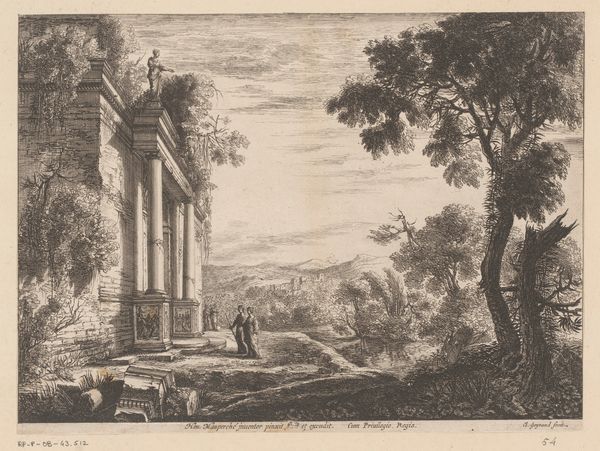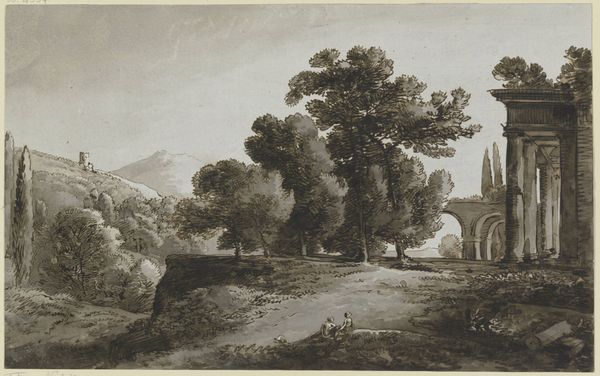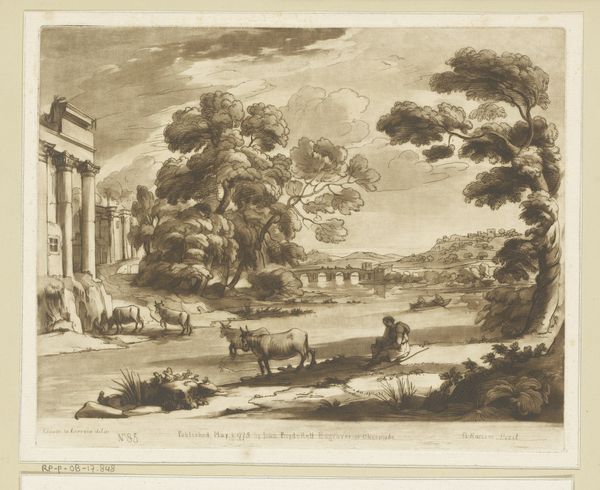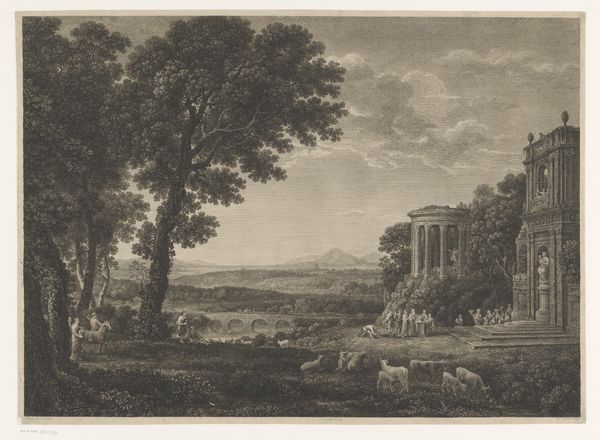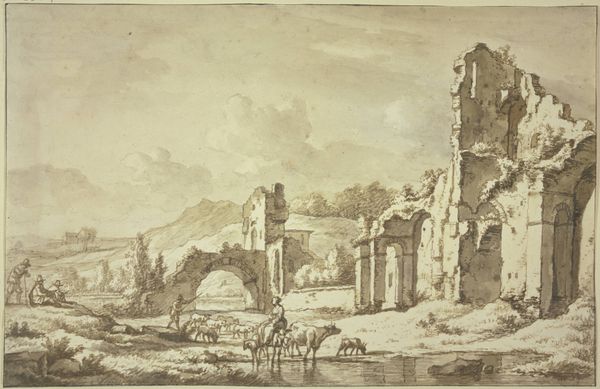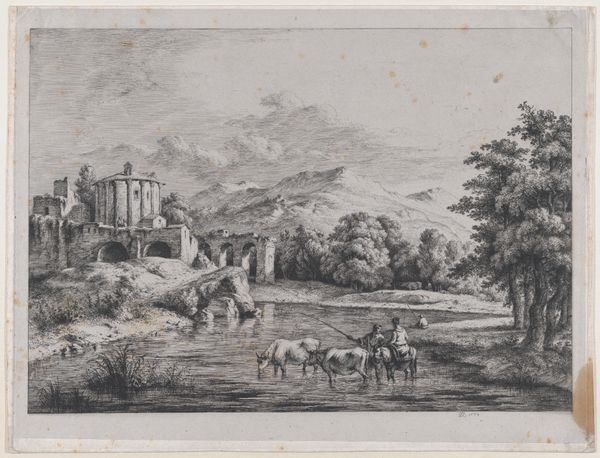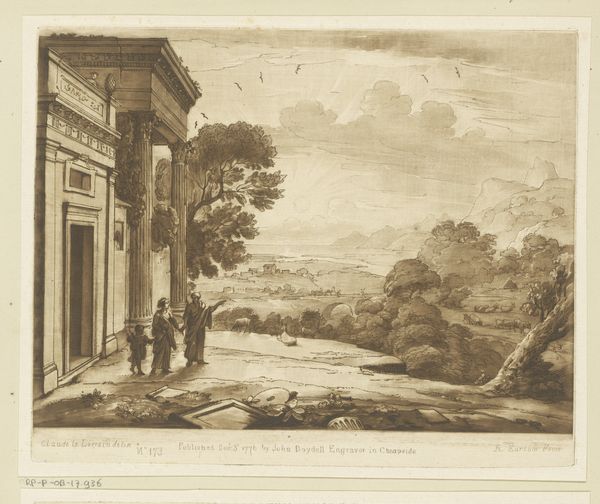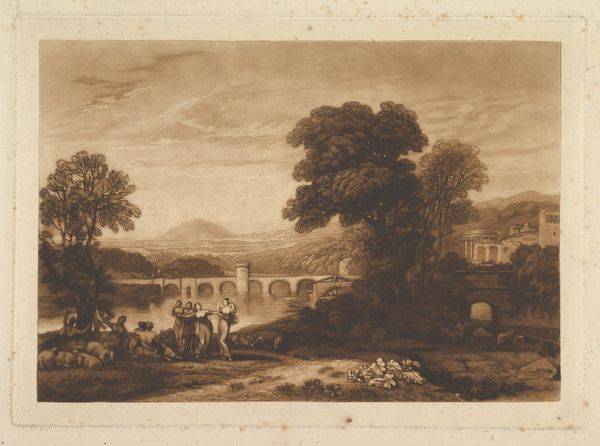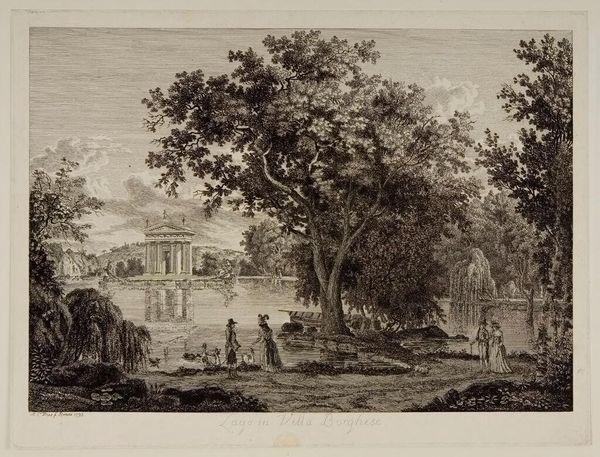
drawing, ink, pen, architecture
#
drawing
#
landscape
#
charcoal drawing
#
ink
#
pen
#
architecture
Copyright: Public Domain
Curator: Before us, we have Franz Kobell’s "Landschaft mit antiken Bauten und einem Obelisken", currently held at the Städel Museum. Editor: The first thing that strikes me is the almost sepia tonality, a nostalgic wash over these imagined ruins. It creates an atmosphere of reflection and perhaps the inevitable decay of even the grandest human endeavors. Curator: Exactly. The artist has rendered this entirely with pen, ink, and charcoal—remarkably traditional materials employed with great precision. Notice the calculated use of shadow, for instance, giving the architecture such three-dimensionality. The pen work delineates a kind of stage, in the arrangement. Editor: That architectural facade really anchors the composition. One must wonder where these materials were sourced; what kind of access Kobell had to the technologies used for grinding pigment and manufacturing drawing media? Curator: While this might evoke earlier topographical studies, there's no such effort here for exactitude; instead, there is a very self-conscious play of perspective. He uses architecture as semiotic building blocks, right, to construct the visual impact? The ruin stands as a kind of figure, poised. Editor: Figure and landscape... What were the economics supporting architectural training, travel to classical sites to witness labor in the building process of the antiquities? One should remember how access played such a huge role! The actual human labor used in extraction and production tends to get left out. Curator: Perhaps. Regardless, it becomes a symbolic meditation, gesturing towards something like, say, the cyclical return of empires—isn’t that something potent even when stripped of specific labor history? Editor: Potent, maybe, but I would have understood better its role in shaping a political mindset during that moment in Europe, maybe… What did architectural schools demand during those times? What opportunities were provided based on your location and/or money? Curator: Well, thinking of the forms alone, consider that obelisk—phallic, authoritative, towering over even nature. It really emphasizes human dominance! Editor: I suppose what I take from Kobell’s piece—it feels as if so much information concerning resource exploitation has been intentionally left out, and it serves as an uncanny document, that it stands as witness, unintentionally perhaps, to an ongoing exploitation that benefits some people and puts others at the very margins. Curator: Interesting points, truly, on exploitation, or maybe erasure. Let's contemplate these notions further.
Comments
No comments
Be the first to comment and join the conversation on the ultimate creative platform.
